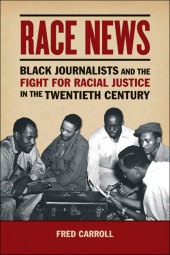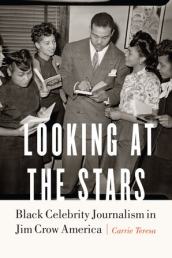This is the first in a series of teaching columns by 2021–2022 History Division teaching committee chair Ken Ward.
The pandemic has taught us that much of what we thought was sacrosanct in the classroom is actually far more flexible than imagined. A risk is that as we (eventually) move beyond the pandemic, we also leave behind this important lesson.
Instead, let’s press forward with it in mind. Today’s student, who has grown up in a world very differently mediated than when we were younger, interacts with media differently than we do. As a result, we may need to rethink how we’re doing things, not just online but also in the face-to-face classroom.
For my part, I’m rethinking textbooks, at least as the primary out-of-class resource assigned to students.
I know from conversations with many of you who are watching students struggle to connect with readings, particularly textbooks, in a way they didn’t in years past. This has been true in my media history course. My students are reading, but they hate it, and they struggle to sort the trivial from the critical.
Some of this definitely falls on me as an educator—teaching that kind of critical thinking is a big part of my job as an educator. But I’ve talked to enough colleagues who I know are excellent educators who say students are struggling with textbooks in a new way.
I don’t think we should be surprised. The decline of dead-tree media and ubiquity of digital tech drives today’s students to interact with material differently—not better or worse, mind you. Differently.
My classroom in this very rural corner of Kansas is likely very different from yours. But in many ways, our classrooms are the same, filled with digital natives who consume nearly all content through phones and laptops and who do not like textbooks. They read it, but they cannot connect with it in the way they can other media.
In that vein, this semester I’ve joined those educators who are deemphasizing traditional textbooks in favor of other means of information delivery. By far the alternative I utilize the most is the History Division’s own podcast (although I try to avoid assigning the episodes I host—those poor students have to listen to me enough). Every textbook reading comes with an accompanying podcast episode to contextualize what they’ve read.
In a history course, this can be further supplemented by videos on YouTube posted by folks like the Sacramento History Museum, videos demonstrating past media technologies which simply must be seen to be appreciated as revolutionary, such as the Linotype. On the page, even with illustrations, these technological leaps too easily seem quaint. Video can bring them to life.
Is all of this working? Who can tell for sure, but test scores are encouraging, and classroom discussions clearly show podcast episodes improve retention and deepen understanding. And the big themes of the course are clearly sticking in the minds of students.
As a result, the textbook is moving into the back seat for me. It’s not going away, as I think the formal structure of a book helps students sort and make connections among concepts. But if students are connecting better with other forms of media like podcasts, it doesn’t make sense for textbooks to be the course’s keystone.
All this is just one guy’s experience, though. During my brief tenure as teaching committee chair, I’ll use this column to explore how other History Division members are connecting with today’s students in their own media history courses. Our goal won’t be to find flashy, throw-out-the-textbook tactics for the classroom—this isn’t an “innovation” column. Instead, we’ll just see what people are doing differently to connect with today’s students. In the next column, Elisabeth Fondren shares what she’s doing differently with regard to assessment, with long, written assignments now taking a backseat in her classroom.













